
Montessori Method vs. Traditional Education
Montessori Method vs. Traditional Education: Find the Best Path for Your Child in My Little Montessori Corner
The choice of educational system for our children is crucial. We are faced with two paths: the Montessori method ⭐️ and traditional education. In "Mi Rinconcito Montessori", we want to help you discover which is best for your family.
Definition of the Montessori Method

Imagine a place where children are the bosses of their own learning, a bit like little conductors conducting a symphony of educational toys. That is the heart of the Montessori method, created by the visionary Dr. Maria Montessori. Here, the buzzword is "autonomy". Children choose what, how and when they want to learn, immersing themselves in a sea of materials that awaken their curiosity and passion for discovery.
In this educational orchestra, there are no assigned chairs or rows of desks; it is more like an organised dance where everyone follows their own rhythm. Children of different ages mingle, learn together and help each other, creating an atmosphere where "I did it myself!" is music to the ears.
Maria Montessori believed that children are like little sponges in their early years, absorbing everything around them effortlessly. So, instead of filling them with facts like a suitcase before a long journey, the Montessori method invites them to explore, touch and experiment, cultivating not only their minds, but their hearts and bodies.
The Montessori method, conceived by Dr. Maria Montessori in the early 20th century, is a revolutionary educational philosophy that puts the child at the centre of his or her own learning process. Unlike conventional methodologies, this approach promotes autonomy, independence and respect for the natural pace of development of each individual.
The essence of the Montessori method lies in the creation of a 'prepared environment', meticulously organised and equipped with specific learning materials designed to encourage exploration and discovery. This stimulating environment invites children to interact with materials of their own interest, promoting self-directed and meaningful learning.
In a Montessori classroom, children of different ages learn together, which fosters collaboration, mutual respect and social learning. This mixed-age group structure allows the younger children to learn from the older children and the older children to reinforce their knowledge by teaching the younger children, creating a communal learning cycle.
Dr. Montessori strongly believed in the importance of cultivating the "absorbing mind" of children in their early years, a critical period when they naturally and spontaneously absorb knowledge from the world around them. Therefore, the Montessori method focuses not only on academic acquisition, but also on the development of the whole child, including emotional, social and physical areas.
Definition of Traditional Education
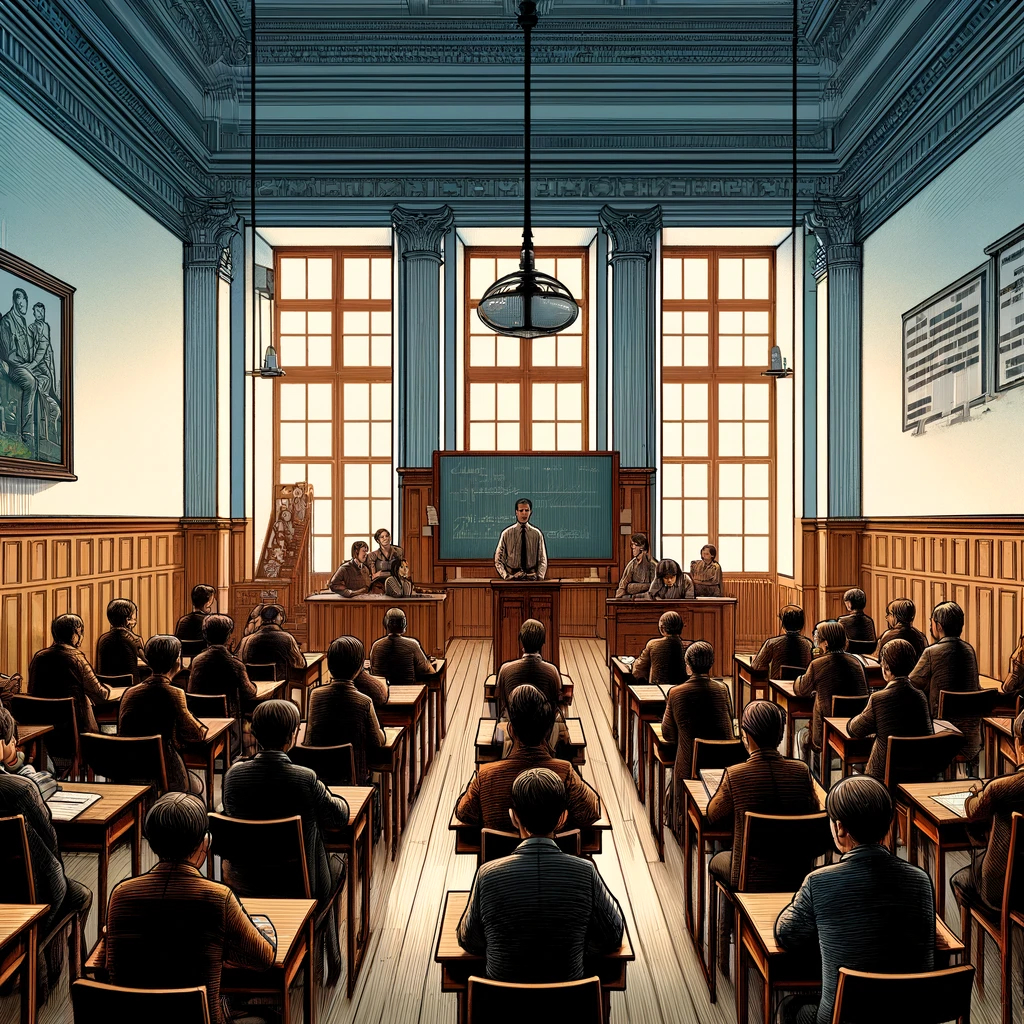
Now, imagine the traditional education classroom as an old ballet school: there is discipline, there is structure and all dancers follow the steps of the choreographer, in this case, the teacher. In this scenario, the script is written, and all students strive to memorise the same movements, aiming for technical perfection.
In this classroom, the teacher holds the baton, and the students follow the melody. Although there is harmony in uniformity, individual notes sometimes get lost in the whole. Assessment is done with a yardstick, where tests and grades measure how much you have filled your suitcase with knowledge, often neglecting the art of the personal journey and individual growth.
Although this classical ballet of education has dominated the stage for centuries, there are those who seek a new choreography, one that allows each dancer to perform their own version of the dance, adapting it to their unique steps and personal rhythm.
Traditional education, also known as mainstream education, is based on a more structured and teacher-directed model, where the curriculum is clearly defined and a more uniform approach is followed in the delivery of instruction. In this system, students are usually grouped by age and progress through the educational levels following a standardised set of guidelines and assessments.
The traditional classroom is characterised by an environment in which the teacher is the central figure, responsible for imparting knowledge and maintaining order. Students receive information passively, often through lectures or demonstrations, and are expected to memorise and repeat information in tests and examinations to demonstrate their understanding.
In this model, assessment of student progress is done primarily through quantitative methods, such as grades and standardised tests, which measure retention of knowledge in specific areas of the curriculum. This can create an environment in which success is measured by a student's ability to meet pre-defined standards, rather than their personal development and individual growth.
Although traditional education has been the dominant model in many parts of the world for centuries, it has faced criticism for its focus on memorisation over deep understanding, lack of attention to students' individual needs and limited opportunity for hands-on learning and creative exploration.
Key Comparison: Montessori vs. Traditional
Focus on the Student

In the education ring, we have two contenders. In one corner, the Montessori Method, where the student is the protagonist of his or her own educational adventure film. Here, each child is like a little Indiana Jones of education, exploring a world full of hidden treasures at his or her own pace and taste. In the other corner, Traditional Education, which is a bit like a classical symphony orchestra, where each musician (or student) follows the score to the letter under the baton of the conductor (the maestro). The symphony sounds magnificent, but what if the violinist wants to improvise?
Role of the Teacher
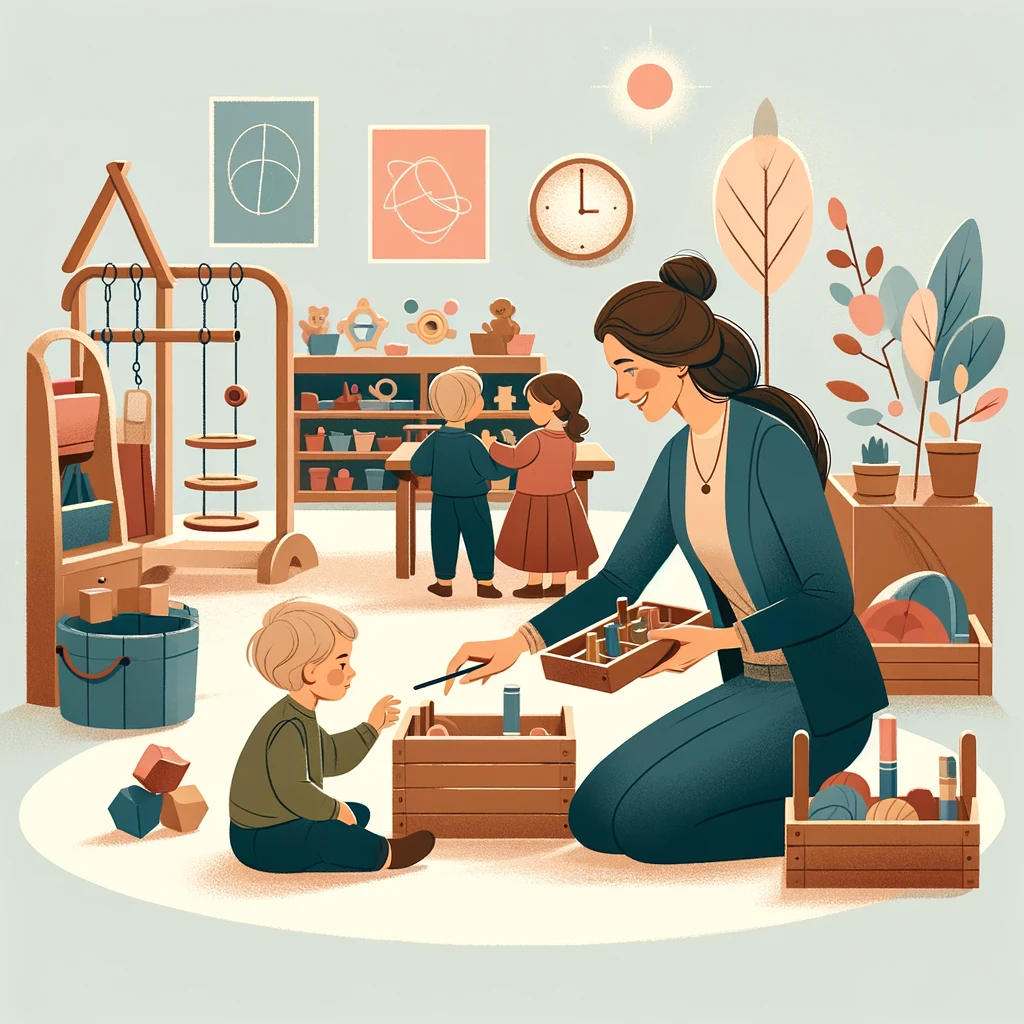
In a Montessori classroom, the teacher is more of a Yoda than a general. He offers wisdom, guidance and support, allowing the little jedi to discover their own paths to the power of knowledge. He is a mentor who understands that learning is a personal and unique adventure. Here, the educator is a facilitator of learning ⭐️, not an authoritarian instructor. This vision contrasts with the more directive role of the teacher in traditional education.
In traditional education, on the other hand, the teacher is the captain of the ship. With a map in hand (the curriculum), he directs his crew through familiar seas, making sure that no one deviates from the set course. It is a more directed approach, where the destination is clear, but personal routes may be less explored.
Learning Environment
Imagine the Montessori classroom as an educational playground designed by the children themselves. Every corner is an invitation to play, explore and learn. It is a living space that adapts and grows along with the children. Let's put on our imaginative glasses and visualise the learning environment in two parallel educational worlds. On the one hand, we have the magical realm of Montessori, and on the other, the expressive efficiency of traditional education.
Montessori's Magic Kingdom
Enter the Montessori realm, a place where every element, every corner, and every little detail is designed to ignite the spark of curiosity and adventure in children's hearts. Here, the environment is the silent master, meticulously designed to invite little explorers to touch, move, experiment and discover.
Imagine a classroom filled with natural light, with low shelves filled with sensory materials, puzzles, maps, and all sorts of tools ready to be discovered. Plants and art adorn the walls, and there are special nooks and crannies for reading, music, and nature exploration. Here, each child has the freedom to move around, choose their activity and immerse themselves in it without time limits, encouraging deep and meaningful learning.
The layout of the space invites interaction, collaboration and mutual respect. The children learn to take care of their environment, from watering the plants to tidying up the materials after use, developing a sense of responsibility and belonging.
The Traditional Education Express
Now, change of scenery and jump on the traditional education express. This train is well-oiled and runs on firm, predictable rails. Here, the classroom is like a train carriage, where each student has his or her assigned seat, facing the teacher, the conductor of this journey.
The walls are adorned with timetables, rulers and educational posters. The blackboard is the centre of attention, and the textbooks are the passports for the day's journey. Structure and order are the pillars that keep this train moving, ensuring that all passengers (students) arrive together at their destination (the set curriculum).
On this journey, there are fewer stops to explore unfamiliar landscapes, and the route is clearly marked. However, efficiency and clarity are the advantages that many passengers appreciate, offering a cohesive and shared learning experience.
The traditional classroom is more like a high-speed train, efficient and en route to a specific destination. All passengers (students) are in the same carriage, enjoying the journey, but with less opportunity to get off at unscheduled stations to explore a little on their own.
Both learning environments, the magical realm of Montessori and the express of traditional education, offer unique landscapes and valuable educational experiences. At "Mi Rinconcito Montessori", we embrace the magic of the Montessori environment, creating a space where each child can flourish at their own pace, guided by curiosity and wonder.
Evaluation and Feedback
Let us now turn to the crucial aspect of any educational process: evaluation and feedback. Each system has its own distinctive approach, reflecting its underlying philosophy and objectives.
In Montessori, assessment is like a personalised scrapbook, filled with anecdotes, discoveries and achievements. It is a qualitative approach that celebrates individual progress and encourages reflection.
Traditional education, on the other hand, prefers exams and grades, a kind of instant selfie of knowledge. It is a quick way to measure success, although sometimes it does not capture the whole story behind the smile.
Understood, let's adopt a slightly more serious tone but keep some warmth in the explanation of evaluation and feedback.
Montessori Personalised Approach
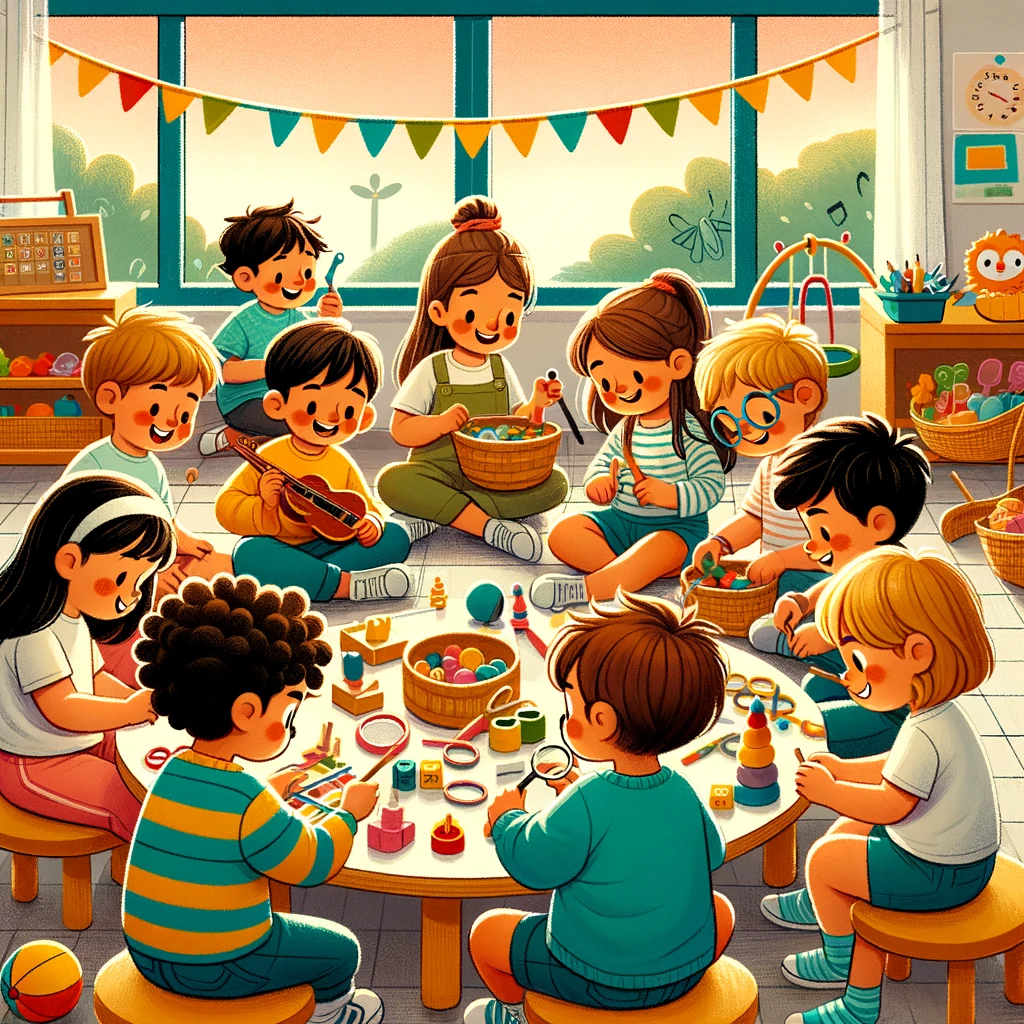
In the Montessori environment, assessment is less a measurement and more an ongoing narrative of the child's development. It is not about standardised tests or numerical grades; it is an organic and dynamic process that recognises and celebrates individual growth in all its facets.
Montessori educators act as attentive observers, gathering information through daily interaction and direct observation. This detailed monitoring allows teachers to provide personalised feedback that not only recognises academic achievement but also the child's social, emotional and physical development. In Montessori, assessment resembles a travelogue, with each page narrating the child's unique evolution. Here, it is not about stressful exams or red marks; it is a holistic appreciation of the child's growth, both academic and personal.
Educators, in their role as guides, collect detailed observations that enable them to provide in-depth and personalised feedback. This ongoing dialogue fosters reflective self-evaluation in children and promotes a growth mindset.
Self-assessment and reflection are key components, fostering in children a deep understanding of their own learning. This holistic approach seeks to empower the learner, making them aware of their strengths and areas for improvement, and promoting a sense of responsibility for their educational process.
Structured Perspective on Traditional Education
In contrast, traditional education employs more formal and quantifiable methods of assessment. Exams, tests and graded assignments are common tools for measuring academic progress. This system provides a clear and consistent framework for assessing student performance, making it easier to compare and track progress over time.
In the traditional setting, assessment takes the form of a scale, where examinations and graded assignments are weighed to determine academic performance. This approach provides a clear framework, but can sometimes lose sight of the uniqueness of each student's learning process.
Feedback in this environment often comes in the form of grades and comments on assignments and tests. While this approach offers clarity and objectivity, it can focus more on the outcomes than on the learning process itself. However, constructive feedback and recognition of efforts and improvements can help students to guide their future efforts and motivate them to overcome challenges.
Both the personalised approach of Montessori and the structured approach of traditional education offer unique advantages in the assessment of learning. At "Mi Rinconcito Montessori", we value the importance of understanding each child's progress as a whole, offering feedback that not only informs but also inspires and motivates.
Benefits of the Montessori Method
Embracing the Montessori method is like choosing a gourmet buffet over a set menu. It offers a rich variety of educational experiences, tailored to the tastes and rhythms of each child. From fostering independence to nurturing innate curiosity, the Montessori method prepares children not just for school, but for life.
The Montessori method, with its unique approach and child-centred philosophy, offers a multitude of benefits beyond traditional academic learning. This educational approach, conceived by Dr. Maria Montessori, is based on respect for each child's individuality and recognition of their inherent potential.
Development of Independence
From the outset, the Montessori method encourages children to be independent. The materials and environment are designed to be accessible and manageable by the children themselves, allowing them to make decisions and learn through their own actions. This autonomy fosters self-confidence and self-esteem, fundamental pillars of personal development.
Self-directed and Self-motivated learning
Children in a Montessori environment have the freedom to choose their activities, allowing them to follow their interests and learn at their own pace. This self-directed learning not only makes the process more meaningful and enjoyable for them, but also develops a strong inner motivation and love of learning that can last a lifetime.
Social and Emotional Skills Development
The Montessori classroom, with its focus on mixed-age grouping and collaboration, is an excellent place for social development. Children learn to work together, respect differences, and offer and receive help. This environment fosters empathy, patience and communication skills, crucial for emotional well-being and interpersonal relationships.
Integral Education
The Montessori method is not limited to academics; it encompasses all facets of a child's development, including physical, social, emotional and spiritual. Through hands-on, sensory activities, children develop a deep understanding of the world and a connection to their environment.
Preparation for Life
Perhaps one of the greatest benefits of the Montessori method is its focus on preparing children for the challenges of real life. Practical life skills, such as caring for themselves, others and the environment, are integrated into the curriculum, equipping children with the tools necessary to navigate the world with confidence and competence.
The benefits of the Montessori method are profound and long-lasting, positively influencing a child's development in all areas of life. At Mi Rinconcito Montessori, we are committed to offering this holistic and respectful approach, creating an environment where each child can flourish and reach their full potential.
How to Incorporate Montessori Elements at Home with "My Little Montessori Corner"

Bringing the Montessori spirit home is like inviting magic into your living room. In "Mi Rinconcito Montessori", we give you the keys to transform the corners of your home into little classrooms full of wonders, where every day is a new learning adventure.
Creating a Montessori-inspired environment at home doesn't have to be a daunting task. With a few tweaks and the right philosophy, you can transform everyday spaces into areas of learning and exploration that reflect Montessori principles. Here are some ideas to get you started:
Prepared Environments
The aim is to create spaces that are accessible to your child and encourage independence. This may mean rearranging furniture so that it is at their height, ensuring that play and learning materials are easily accessible and neatly arranged on low shelves. A well-prepared environment invites children to explore and learn on their own, facilitating self-management and decision-making.
Montessori Materials at Home
Incorporating Montessori materials does not always require large investments in specialised equipment. Many Montessori principles can be practised with everyday objects. For example, kitchen utensils can be an excellent tool for teaching practical life skills, while natural objects can be used for sensory explorations. The important thing is to choose materials that are safe, age-appropriate and invite active learning and exploration.
Consistent Routines
Clear routines and structures help children feel secure and know what to expect. This does not mean a rigid schedule, but rather a consistent sequence of activities that provide a sense of order and predictability. Including children in everyday household chores, such as preparing the table or caring for plants, promotes responsibility and respect for the environment.
Promoting Independence
One of the cornerstones of Montessori is to foster independence and self-reliance from an early age. At home, this can mean creating spaces where your child can safely exercise their autonomy, such as having a water station for them to help themselves or a dressing area at their height for them to choose their clothes.
Time for Unstructured Learning
Leave space in the day for unstructured play and learning. This means time without screens, scripts or specific expectations, allowing your child to follow their natural interests and curiosity. This time is essential for developing creativity, problem solving and critical thinking.
Incorporating Montessori elements at home is, in essence, about providing an environment that supports and respects your child's natural development. At "Mi Rinconcito Montessori", we are here to support you on this journey, offering you resources, ideas and inspiration to create a home that is not only a place of love and security, but also a space for learning and discovery.
In the search for the ideal educational path for your child, both the Montessori method and traditional education have their melodies. At "Mi Rinconcito Montessori", we celebrate the uniqueness of each child, offering a setting where they can be the authors of their own educational story, with a dash of Montessori magic.
The decision between Montessori and traditional education depends on your child's needs and your family values. At "Mi Rinconcito Montessori", we invite you to explore an educational path that celebrates individuality and prepares children to be curious and compassionate citizens of the world.


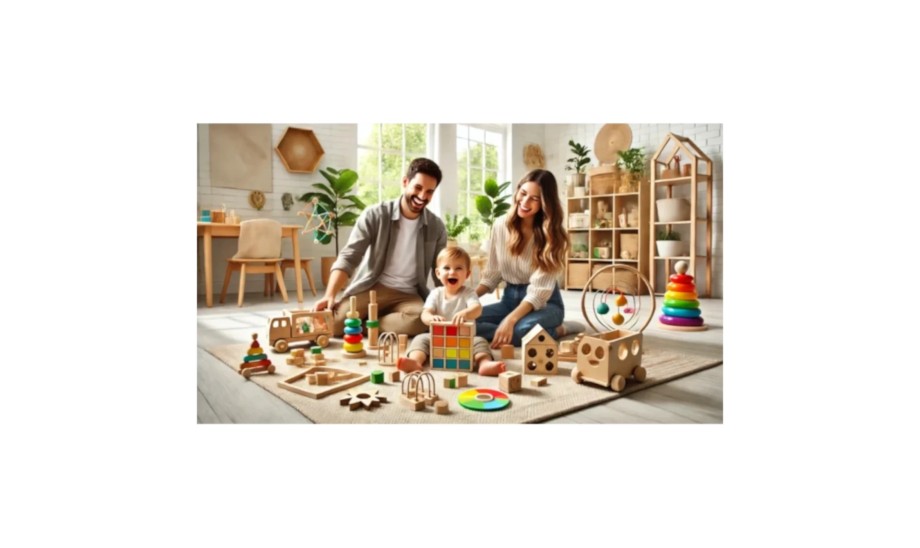
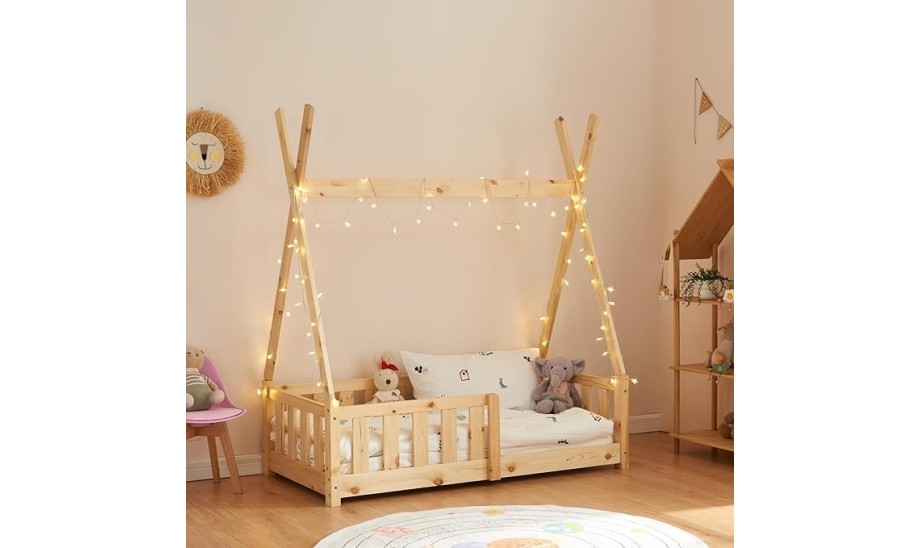
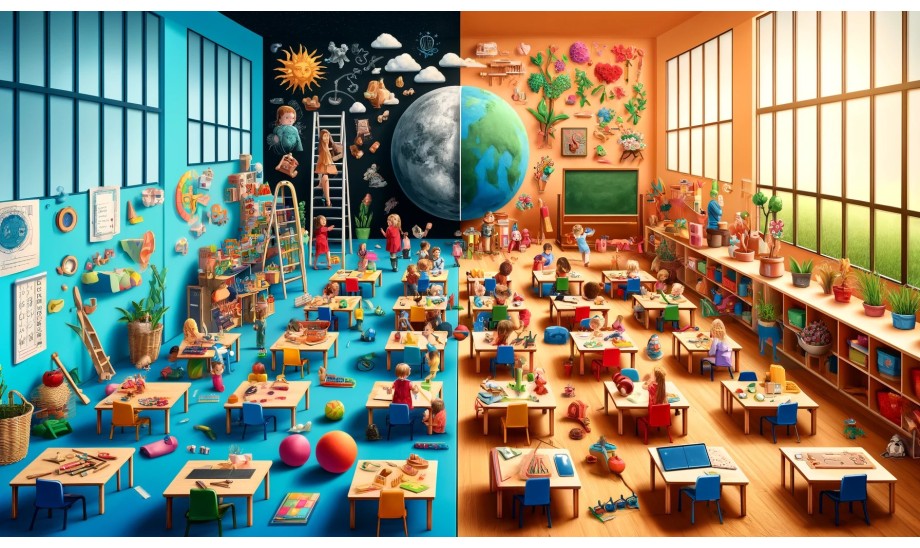
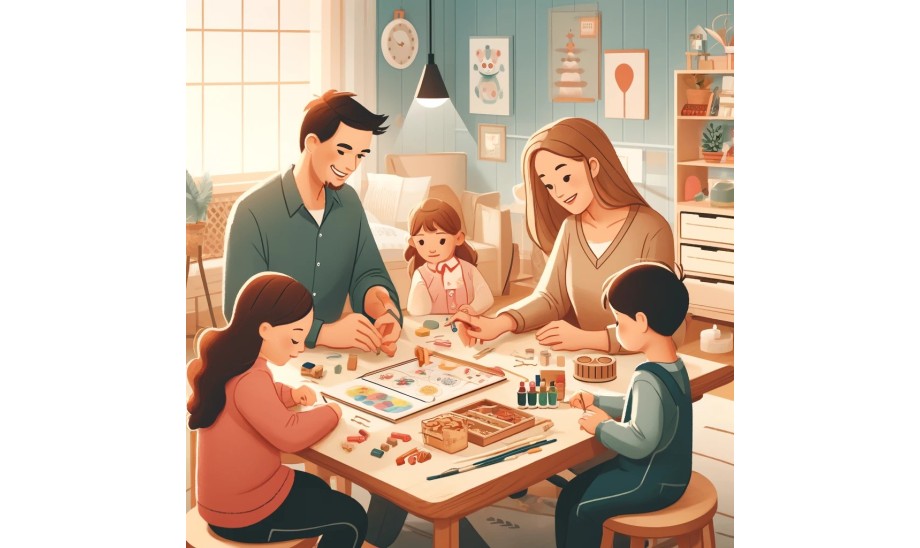
Comments
No comment at this time!
Leave your comment